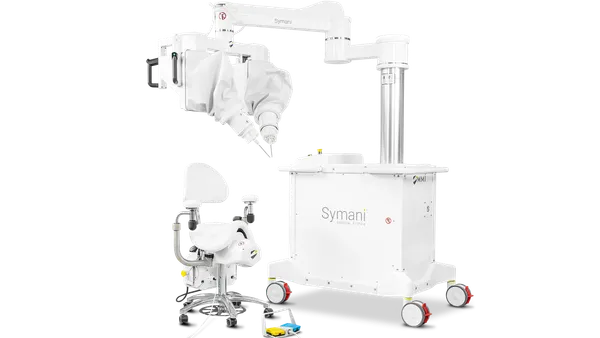Dive Brief:
- New two-year data from Edwards Lifesciences on its transcatheter aortic valve replacement device Sapien 3 in low-risk patients found the device is no longer statistically superior on some factors of a composite endpoint. The medtech presented at a virtual version of the American College of Cardiology meeting that had been canceled because of the coronavirus pandemic.
- Statistically, Sapien 3 was found no better than surgery at two years in terms of all-cause death, all stroke, and death or disabling stroke, although it retains an edge numerically in each case, according to the new data.
- Medtronic also presented early results suggesting its Evolut TAVR device is safe and effective in patients with bicuspid aortic valves at low surgical risk, a subpopulation excluded from earlier studies. The rate of death or disabling stroke at 30 days was 1.3% and the device success rate was 95%. However, the short-term nature of the data, plus some unresolved safety concerns, leave scope to query Evolut’s value over surgery.
Dive Insight:
At the American College of Cardiology meeting in New Orleans one year ago, Edwards and Medtronic set the stage for the ongoing expansion of the booming TAVR market by showing their devices are at least as safe and effective as surgery in people at low surgical risk. The results supported the use of TAVR in people beyond the intermediate and high-risk patients who were early users of the devices.
The two medtech giants looked to support expansion of the patient population again this year.
The results for Edwards were less emphatic this year, after a registry study in 2019 linked the use of Sapien 3 in bicuspid patients to a 2.4% risk of stroke and a 9.1% rate of pacemaker implantation. Both figures were numerically higher than in the broader TAVR population, leading two cardiac surgeons to write at the time that the results “should give us pause when considering this treatment option for typical, young [bicuspid aortic valve] patients with low surgical risk.”
The case for TAVR in low-risk patients without the congenital heart defect is stronger, although the update Edwards shared at this year’s ACC was less overwhelmingly positive that data it posted in 2019. Last year, to the surprise of the research team, Edwards showed TAVR was superior to surgery in low-risk patients against multiple endpoints.
At two years, Sapien 3 remains statistically superior to surgery against an endpoint that combines all-case death, all stroke and rehospitalization, but fell short on certain individual factors.
The big, unanswered question is whether Sapien 3 will remain noninferior to surgery over the long term. A TAVR skeptic could regard the trend seen between the first and second years of the trial as evidence that surgery will become superior to Sapien 3 at some point in the future, but that will only be proven or disproven by future updates.
Having presented two-year results in low-risk patients last year, Medtronic arrived at ACC armed with data intended to unlock another market. The data came from a trial of 150 people with bicuspid aortic valve stenosis at low surgical risk.
Prospective TAVR trials have typically excluded bicuspid patients over concerns such as asymmetric calcification and the potential for incomplete valve expansion, rendering it unclear how well the devices work in the 1.3% of people who have the congenital heart defect.
Thirty days after treatment with either Evolut R or Evolut PRO, one patient had died and another had suffered a disabling stroke. The rate of each event was 0.7%. Subjects had a predicted risk of 30-day mortality of less than 3% at the start of the study.
Medtronic also gathered data to suggest the devices are having the desired effects. After 30 days, 60% of patients had, at worst, trace aortic valve regurgitation. The remaining 40% had mild cases.
However, other aspects of the data raise questions about whether TAVR will gain traction in low-risk bicuspid patients, at least at this stage. The rate of pre and post-TAVR dilation, plus the frequency with which the device was resheathed or recaptured, create a risk of stroke. A little more than 3% of patients suffered a non-disabling stroke.
As in other Evolut trials, the TAVR procedure was also associated with the need for a permanent pacemaker. The rate of pacemaker implantation in the 30 days after treatment was 15%. In light of those figures, it remains to be seen whether Medtronic currently has the data to quell the concerns some cardiologists have about the use of TAVR in the bicuspid population.
Other groups also used the event to share TAVR updates. One study found that the rate of serious complications is higher than expected at one out of 10 TAVR sites in the U.S. Another study linked TAVR and open-heart surgery to comparable one-year death rates in real-world settings.







